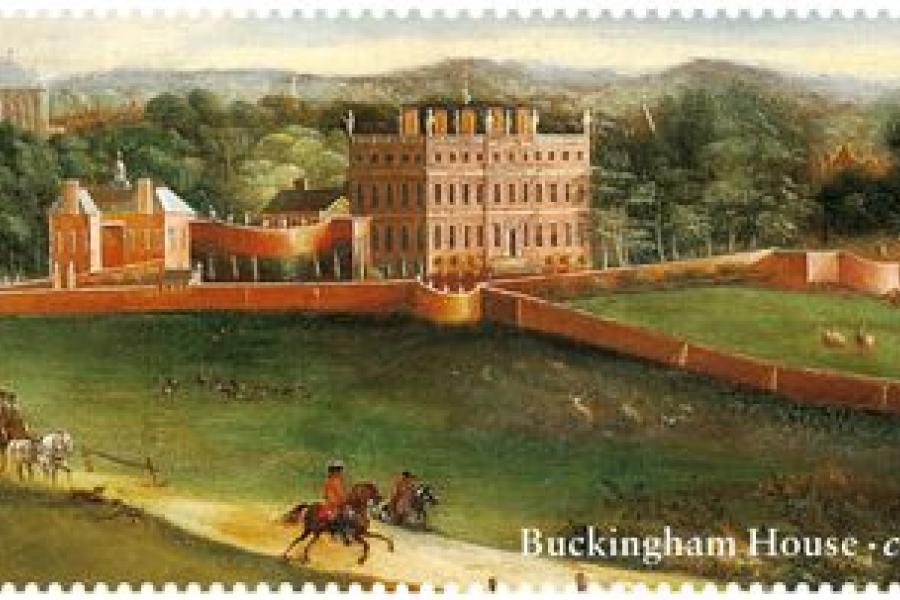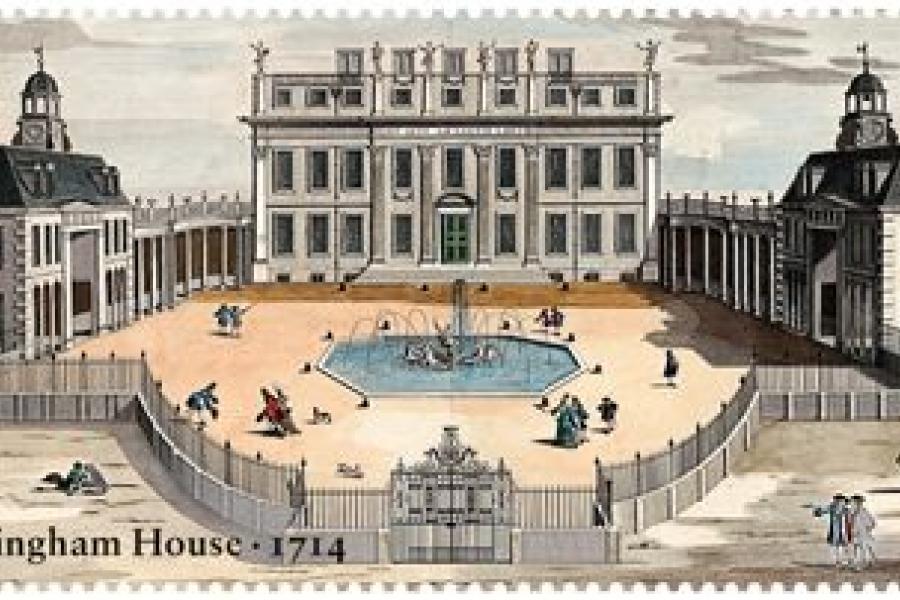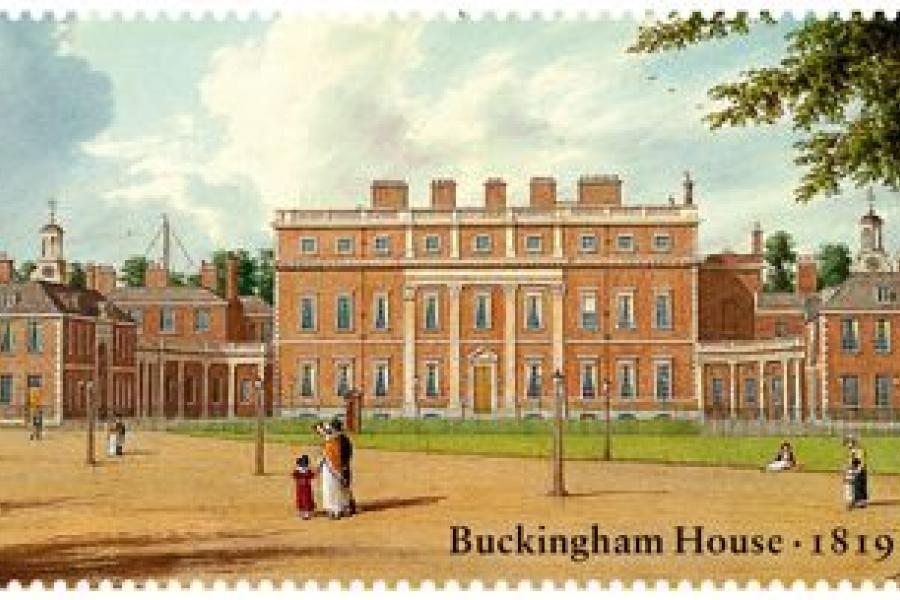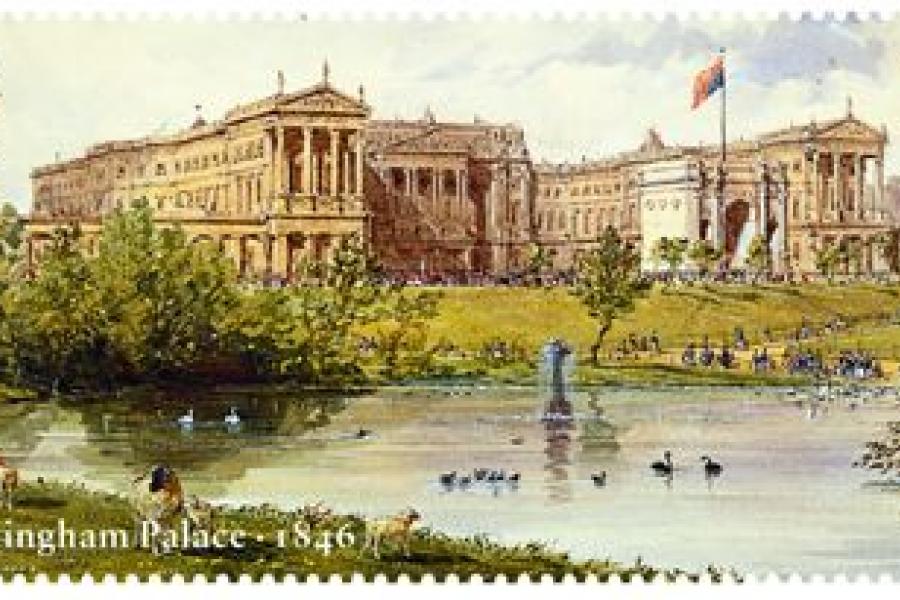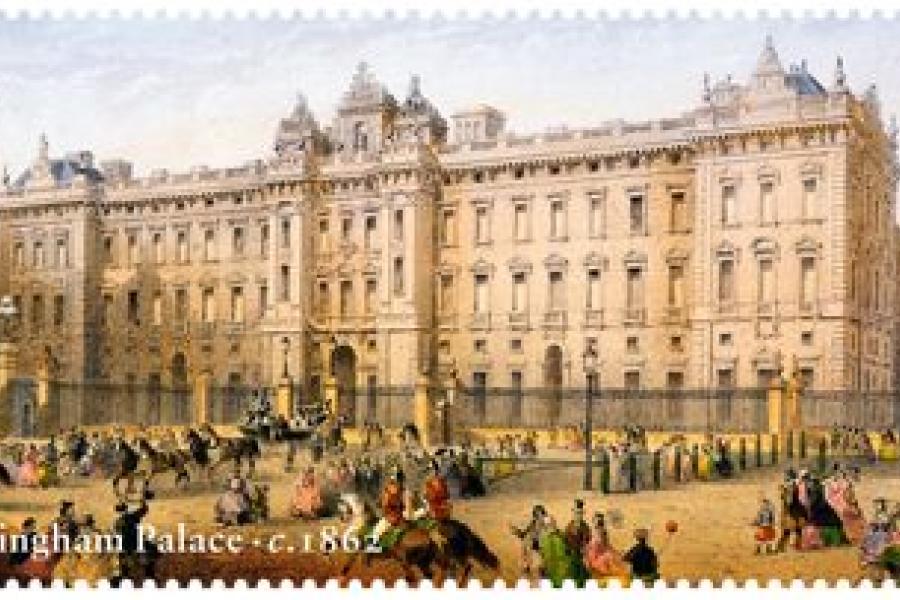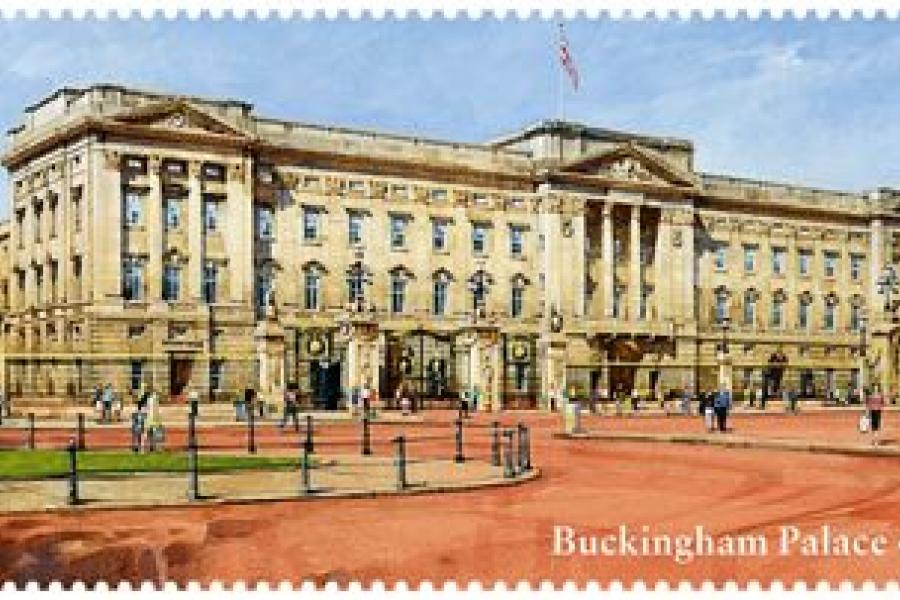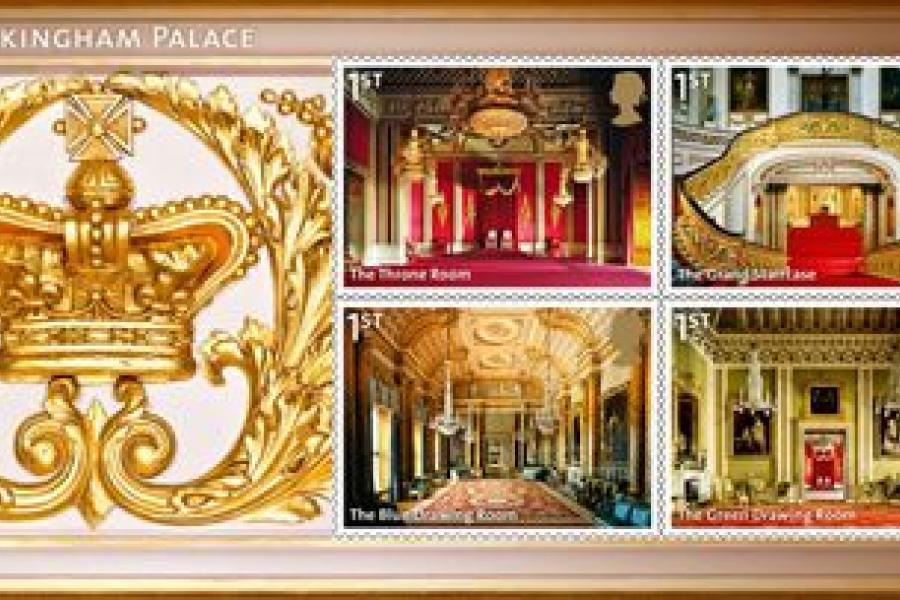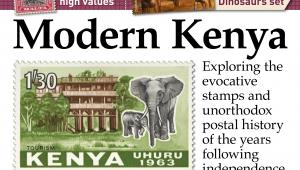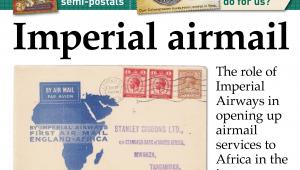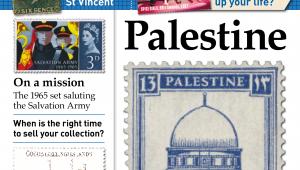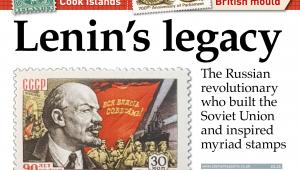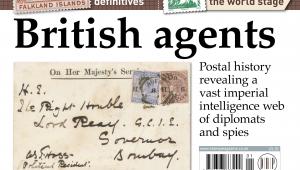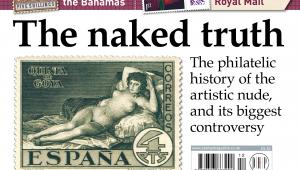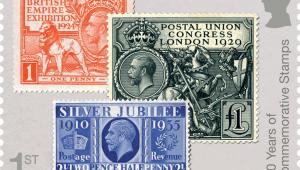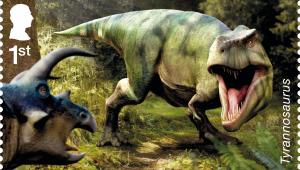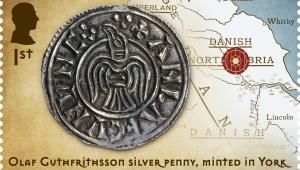Buckingham Palace — the Queen's city home, from house to palace

The Buckingham Palace set, to be issued on April 15, celebrates the history of the Queen’s official residence, which is one of the few working royal palaces left in the world.
Its history can be traced back to the early 17th century, when a mulberry garden was established on the site in London to breed silkworms. A house built there for Lord Goring in 1633 was replaced on a larger scale by the Earl of Arlington, who was Secretary of State to King Charles II, and in 1698 Arlington House was acquired by John Sheffield, who was created Duke of Buckingham in 1703.
The set of six se-tenant sheet stamps takes up the story from there, reproducing period paintings which are mostly from the Royal Collection and adding a specially commissioned modern view.
An accompanying four-stamp miniature sheet offers views of the lavish interior, from photographs.
The set was designed by Howard Brown and printed in litho by International Security Printers, while the miniature sheet was designed by Robert Maude and Sarah Davies and printed in litho by Enschedé.
VERDICT
COMMEMORATIVE WORTH
An evocative look at the story of an iconic building with real national prestige
QUALITY OF DESIGN 
Turning to period paintings and engravings befits the grandeur of the subject matter
WOW FACTOR 
Sure to interest tourists, but the images show their true magnificence only when seen at large size
1st class Buckingham House c1700
Buckingham House was built in 1702-05 by John Sheffield, Duke of Buckingham, who demolished the existing building
on the site to erect a a three-storeyed brick house with flanking pavilions. At that time it was a country home, backed by fields of cattle and deer, with the nearest other large building being Westminster Abbey, as this painting by Adriaen van Gest shows.
1st class Buckingham House 1714
An engraving by an unnamed 18th century draughtsman shows the same building just a few years later, but from the front, where it looks quite different, a town house with a large courtyard. This is also a more formal scene, with gentlemen in tricorn hats bowing to each other and well-dressed ladies taking a stroll.
1st class Buckingham House 1819
King George III purchased the building in 1761 and began to remodel it, but not as anything more than a private retreat for his wife and family, while St James’s Palace remained the official residence. This watercolour by William Westall shows the house at the end of his reign, when it was known as the King’s House, Pimlico.
1st class Buckingham Palace 1846
It was King George IV who decided to convert the house into his chief residence. The government refused to grant him any more than £350,000, but he commissioned John Nash to build him a new palace which ultimately cost £700,000. As shown in this painting by Joseph Nash (no relation to the architect), it was originally fronted by the Marble Arch, which was later relocated to the north end of Park Lane.
1st class Buckingham Palace 1862
When Queen Victoria moved into the palace in 1837, it was still incomplete; the drains didn’t work and the windows didn’t open. But Prince Albert took charge of making the building more comfortable, and with the Marble Arch exiled and the grand east front added by Edward Blore, it assumed the shape we know today, as shown in a lithograph by Achille-Louis Martinet.
1st class Buckingham Palace 2014
The familiar modern façade of the palace, which was remodelled in Portland stone by Sir Aston Webb in 1913 on the instructions of King George V, throngs with tourists in this watercolour painting by Chris Draper, specially commissioned by Royal Mail.
MINIATURE SHEET
1st class The Throne Room
Designed for investitures and receiving dignitaries, the Throne Room was also used as a ballroom in the early years of Queen Victoria’s reign. More recently, Queen Elizabeth II’s and Prince William’s formal wedding photographs were taken here.
1st class The Grand Staircase
Designed by John Nash at the request of George IV, the Grand Staircase has a balustrade comprising an intricate pattern of acanthus, oak and laurel leaves cast in bronze. Queen Victoria had the series of portraits of her immediate family displayed around the upper stairs.
1st class The Blue Drawing Room
George IV intended the Blue Drawing Room as a ballroom. Today it is a gathering point for guests before large lunch parties, and state and diplomatic occasions. Its blue flock wallpaper was hung by Queen Mary in the early 20th century.
1st class The Green Drawing Room
Decorated in the time of King William IV, the Green Drawing Room still looks much as it did then. The formal 1953 photograph of the Queen in her Coronation robes was taken here by Cecil Beaton.
OTHER PRODUCTS
One architectural historian, John Martin Robinson, relates the full history of Buckingham Palace in the presentation pack, while another, Dr Geoffrey Tyack, considers its past and present use in a prestige stamp book.
A retail stamp book includes the Grand Staircase and Throne Room stamps from the miniature sheet, along with four 1st class Machin definitives.
First day covers and stamp cards are also available.
PRICES
Set of 6 stamps £6.20
Miniature sheet £2.48
Presentation pack £6.70
Stamp cards £4.95
First day envelope £0.30
First day cover (set) £4.94
